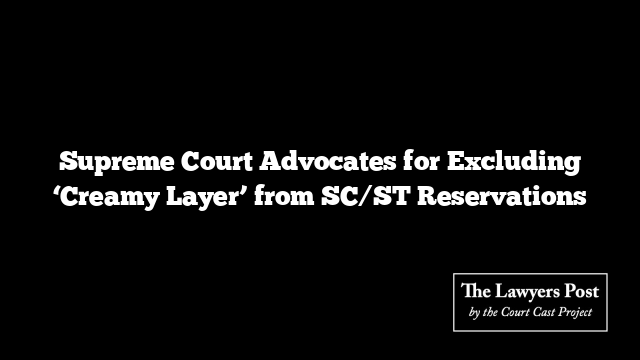In a landmark decision, the Supreme Court has taken a significant step towards refining affirmative action policies by advocating the exclusion of the ‘creamy layer’ among Scheduled Castes and Scheduled Tribes (SC/STs) from reservation benefits. Currently, this principle applies solely to Other Backward Classes (OBCs).
A Constitution Bench, composed of four judges, upheld the power of states to further categorize SC/STs based on varying levels of backwardness, aiming to ensure that only the most disadvantaged members of these communities receive the benefits of reservation. The judgment emphasized that the essence of reservation is to promote genuine equality.
Justice BR Gavai, in his concurring opinion, highlighted the necessity of identifying the affluent, or ‘creamy layer,’ within SC/STs and excluding them from reservations. “The state must formulate a policy to filter out the creamy layer within the SC/ST category to achieve true equality,” Justice Gavai asserted.
Justice Vikram Nath echoed this sentiment, suggesting that while the criteria for determining the creamy layer in SC/STs might differ from that for OBCs, the principle should nonetheless apply. “The exclusion criteria for SC/STs can differ from OBCs, but the goal remains the same: ensuring that reservations reach only those truly in need,” he stated.
Justice Pankaj Mithal added that reservations should primarily benefit the first generation of a disadvantaged group. “If the second generation has achieved parity with the general category, then reservation benefits should cease,” he opined.
Justice Satish Chandra Sharma reinforced the importance of this policy, calling it a constitutional necessity. Meanwhile, two judges on the bench, including the Chief Justice of India, refrained from expressing an opinion on the matter, while one delivered a dissenting judgment.
This decision marks a pivotal moment in the ongoing debate about the scope and implementation of affirmative action in India, underscoring the need to continuously adapt policies to ensure they serve their intended purpose effectively.





